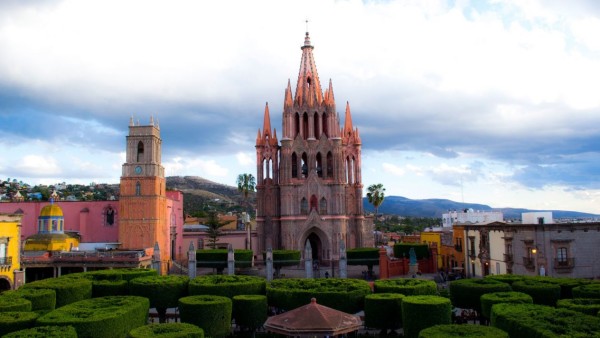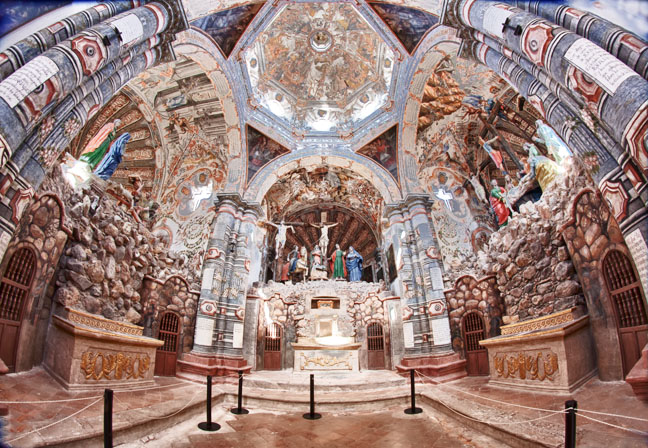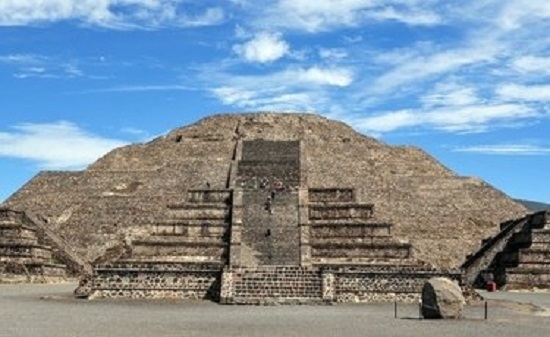San Miguel de Allende chose its seven Cultural Heritage treasures, out of 38 proposals, after two uninterrupted weeks of voting through the internet.
The people decided that the seven treasures of San Miguel de Allende are:
- Parroquia de San Miguel Arcángel and its historic temples.
- Sanctuary and House of Spiritual Exercises of Jesus of Nazareno de Atotonilco.
- The festivities of San Miguel Arcángel.
- Festivities of the Lord of the Conquest.
- The Historical Districts of San Miguel.
- The Archaeological Zone Cañada de la Virgen.
- Popular Art of the city (wool and brass).
From now on, these have been incorporated into the “Representative List of the Treasures of the World” of the International Bureau of Cultural Capitals.
In that list, the only states in Mexico that had incorporated elements besides San Miguel de Allende are Colima and Yucatán.
The seven treasures
Parish of San Miguel Arcángel and its historical temples
The history of the city of San Miguel de Allende is closely linked to the Parish of San Miguel Arcángel.
On the border of the so-called Tierra Adentro, between the 1560s and 1570s, the secular parish of the town of San Miguel el Grande was strategically founded, and the construction of the first parochial building began.
From 1680 to 1710 a second project was completed, known since its time as the “new parish”.
Shrine and House of Spiritual Exercises of Jesus Nazareno de Atotonilco
The cattle and agricultural land of the area, belonged to different Spanish owners throughout the three centuries of the Colonial Era, and since 1740, Atotonilco was dedicated to the foundation, construction and maintenance of the cult of the Sanctuary.
This site, known at the time as the Jerusalem Indiana and Octava Maravilla del Obispado de Michoacán, is one of the most finished, complex and authentic examples of the Latin American Baroque style.
Festivity of San Miguel Arcángel
San Miguel Arcángel is the founding patron and saint of this historic region, from the time of the Spanish conquest.
Its festivity, of universal and multicultural character, takes place at the end of September and is related in an alternate way with the agricultural, religious, ritual of the pre-Hispanic indigenous ancestral calendar.
Festivity of the Lord of the Conquest
The first Friday of March is traditionally celebrated to the Holy Christ of the Conquerors, Lord of the Good Temporary, a light image of corn, matte and colored paper, treasure of the cultural and sculptural heritage of Mexico, and of this historic region, where The Lord of the Conquest resides since the sixteenth century (1560-1570).
Historic neighborhoods of SMA
From the 18th century, important historic districts were formed in the boundaries of the urban layout of the town of San Miguel el Grande, among which are those of Obraje, Tecolote, San José, La Tenería, Loreto, Calvario, Reboceros, Old Carnage, El Palmar, El Pueblito, San Antonio de la Casa Colorada, Ladrillera, El Cerrito, Mezquital, El Cuerno and San Juan de Dios, among others.
Cañada de la Virgen archaeological site
The Cañada de la Virgen, located 16 kilometers southwest of the urban center of San Miguel de Allende, is a ceremonial pre-Hispanic Mesoamerican ritual settlement.
Extending through 12 hectares, it refers to an architectural pattern of Mesoamerican character which main foundations were used to make celestial observations.
Folk Art (Wool and Brass)
Historically the San Miguel region, for almost five centuries, developed a large number of “minor” manufactures, linked mainly to livestock, agriculture and textile production, priority activities to which its extensive territory was dedicated.
The elements manufactured with wool and brass feature specialized trades, materials, creative processes, techniques and original designs, inherited through a succession of generations, that today are Cultural Heritage of San Miguel de Allende.
SMT Newsroom with information from elfinanciero.com.mx



